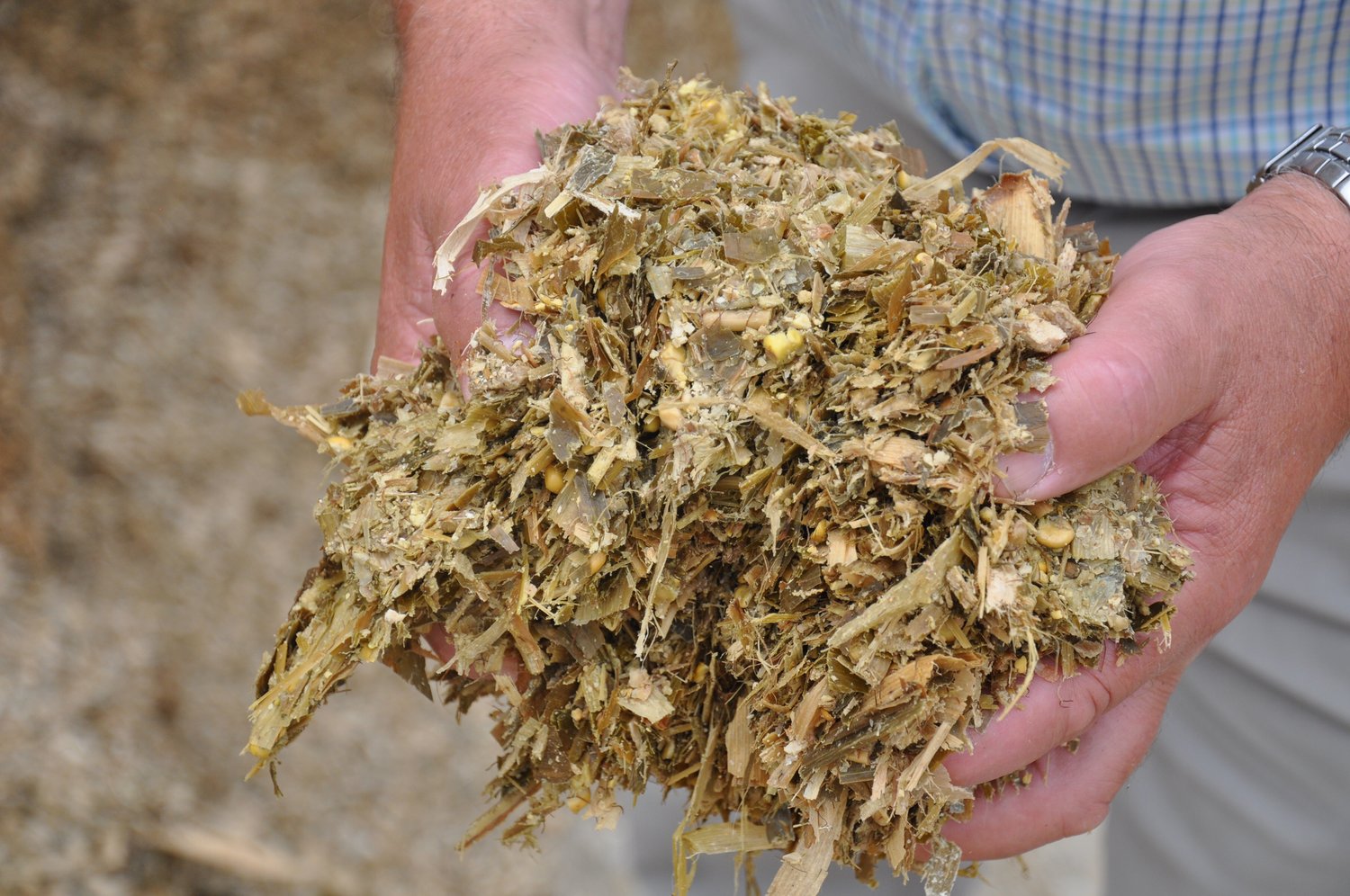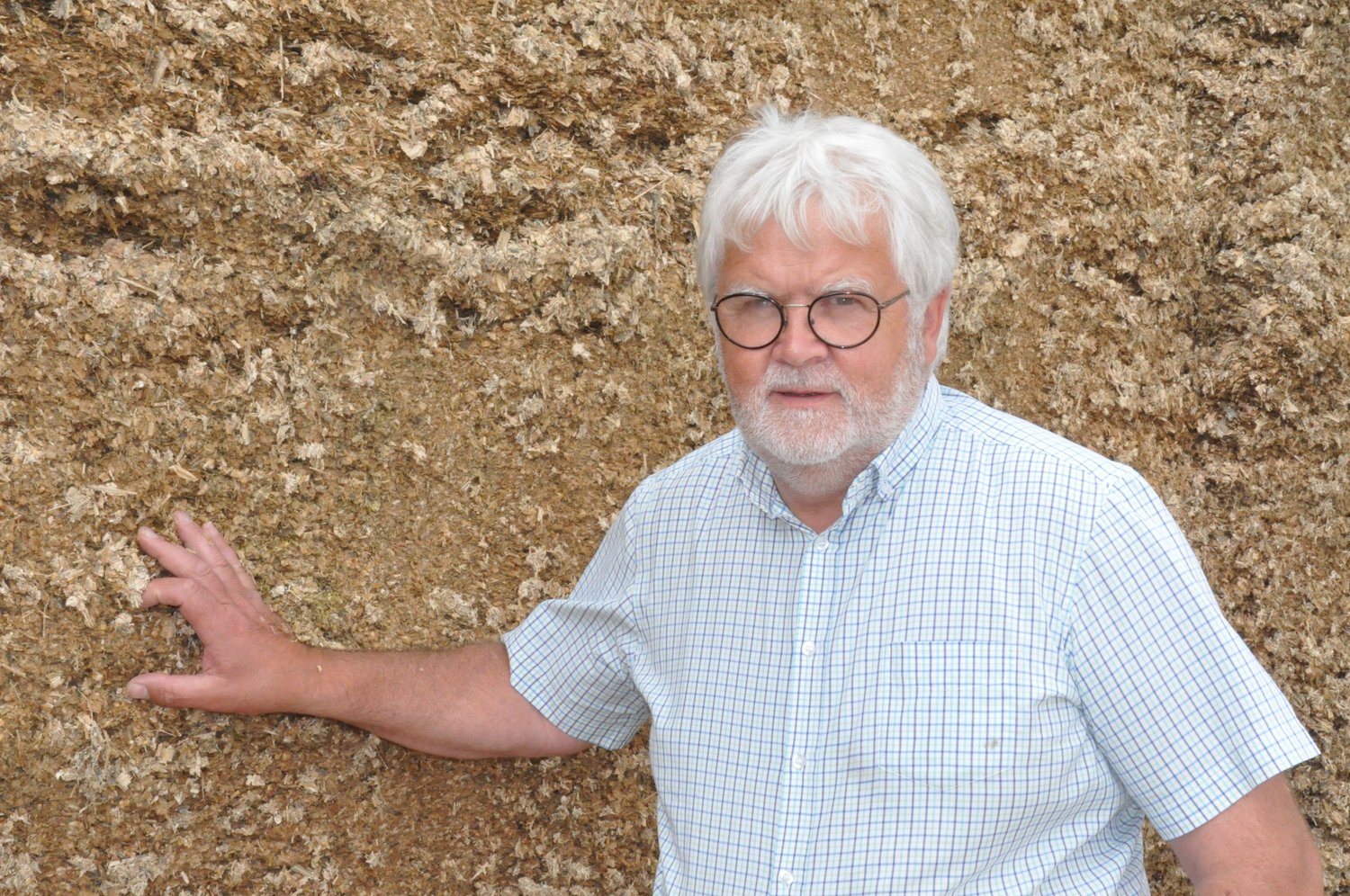Five steps for better maize silage
12 July 2023
Having good stocks of quality forage helps to improve farm resilience in times of volatile milk prices and unpredictability. Volac silage experts offer guidance.

You only need to look back over the last two years to see the volatile and unpredictable nature of modern dairy farming.
Milk prices experiencing exciting highs then heart-sinking declines. Variable input costs. And a severe drought last season that left many farms facing a forage crisis.
While only part of the solution, having good silage safely ‘banked’ puts farms in a better position to navigate volatility and unpredictability, says Volac forage expert for southern England, Ken Stroud. And with the spotlight on greenhouse gas emissions, good homegrown forage is highly sustainable, he adds.
Mr Stroud says: “A lot of money is invested in growing a maize crop to produce a good source of dry matter (DM) and metabolisable energy. At the end of the season, it is crucial to ensure as much of that investment as possible is recouped. This is achieved through harvesting the crop at its nutritional peak, then ensiling correctly to safeguard against losses in the clamp.
Maize losses
Typically, Mr Stroud says equivalent to one in every 10 trailer loads of maize DM ensiled is lost in clamps due to the growth of unwanted bacteria, yeasts and moulds; however this can easily double, particularly where attention to detail slips during the ensiling process.
He says: “What is also important to realise is that these unwanted microbes feed first on the sugars and starches, rather than fibre. So the silage remaining is also lower in energy. Making consistently better maize silage requires a multi-step plan.
_-_from_Volac_(FARM1608)_copy_original.jpg?1689167553)
1. Harvest maize at its peak
Mr Stroud says capturing maximum nutrient content in maize starts by harvesting when the whole plant reaches 30-33% DM, but also while leaves are still green.
He says: “Maize is often regarded as only ready to harvest once leaves die back. But by then it is past its best.
“Although harvesting later can increase starch in the cobs, by harvesting while leaves are still green and lush, the plant is more digestible to the cow.
“In addition, dead foliage harbours unwanted yeasts and moulds and is more difficult to consolidate in the clamp than softer, living tissue, which makes it vulnerable to losses from heating (aerobic spoilage).
“Even last season when a lot of maize in parts of the country died off prematurely because of the drought, crops that were cut earlier tended to produce better silage.
It is easy to miss the 30-33% DM target if contractors cannot get to the farm in time. So check crop % DM regularly to give contractors plenty of notice.
_original.jpg?1689167608)
2. Leave enough stubble
Although it is often tempting to cut maize crops closer to the ground in search of extra yield, Volac silage expert for Wales and the west of England, Peter Smith, urges strongly against this.
Mr Smith says: “For a start, the stem base is low in nutritional value. But it also contains high numbers of undesirable microbes, for example bacteria from the soil which interfere with the fermentation in the clamp, as well as yeasts and moulds. Therefore, ask your contractor to leave at least 15 cm of stubble.
3. Chop to the correct length
Chop maize short enough to aid consolidation but long enough for it to perform in the rumen, advises Peter Smith.
He says: With maize vulnerable to heating, chopping shorter helps you squeeze out air during rolling, and is especially important if maize is dry. Consider chopping to 1.5-2.0cm, or down to 1.2cm if needed.

4. Preserve with a dual-acting additive
While heating in maize silage causes significant losses, do not think this is the only source of loss, says Volac silage scientist, Dr Mark Leggett. As much as half the losses can be invisible due to an inefficient fermentation, he points out, making it important to safeguard against both problems.
Dr Leggett says: “An efficient, rapid fermentation is the starting point to good maize preservation. Fermentation is carried out by bacteria. However, while some bacteria will ferment maize sugar purely to desirable lactic acid, which is highly effective at preserving maize against the growth of unwanted spoilage bacteria, others ferment sugars to other compounds, including CO2. This is not good because, as well as being a greenhouse gas, CO2 is a direct loss of DM.
You cannot control which types of bacteria are present on the crop. However, by applying an additive, such as Ecosyl, containing the proven strain of efficient lactic acid-producing bacteria, Lactiplantibacillus plantarum MTD/1, you increase the likelihood of a quality fermentation,” he adds.
Yeasts and moulds
Unfortunately, unwanted yeasts present on maize at harvest can survive in low pH conditions, says Dr Leggett, and even grow on lactic acid when exposed to air.
“This process, which causes maize silage to heat up and is called aerobic spoilage, not only burns away valuable energy, but also releases CO2 and results in losses in the silage’s DM. As the lactic acid is used up, the pH also rises, which allows other fungi to grow, further reducing nutritional value and palatability, and potentially resulting in mycotoxins.
“The dual-acting additive, Ecocool, not only contains Lactiplantibacillus plantarum MTD/1, proven to produce a rapid fermentation, but also a second beneficial bacterial strain, Lactobacillus buchneri PJB/1, which generates acetic acid which has anti-yeast properties. Ecocool has been shown to reduce yeast levels and keep silage cool and stable for more than 10 days.
Increasingly, Ecocool is being used as an integral step in making silage. With the growth of many maize crops affected by the drought last season, many farmers reached for Ecocool in order to preserve what maize they had. Farmers that have tried Ecocool tend to stick with it as the additive of choice.
__300_original.jpg?1689167789)
5. Fill, squeeze, cover and weight
The attention to detail put into filling, compacting, sheeting and weighting has a massive impact on how well maize silage turns out, says Volac silage expert for northern England, Jason Short.
The aim is to get the air out quickly and keep it out in order to aid the fermentation and limit the growth of yeasts and moulds that cause heating losses, he adds.
Mr Short says: “To minimise air ingress, line the clamp walls with polythene side sheets before filling. In order to get maximum benefit from compaction machinery, fill in layers at most 10-15cm deep and at no more than 20 degrees to the horizontal.
Maize needs a terrific amount of compaction. A crop at 30% DM requires about 25% of its weight arriving at the clamp per hour to be rolling it constantly. So 100 tonnes per hour requires 25 tonnes. This might be a loading shovel plus a good-sized tractor. Drier crops will need extra compaction.
“Once filled, place an oxygen barrier film on top. This will be sucked into the surface contours of the maize to help create a seal. Pull side sheets over it, using a minimum 1-2 metre overlap all around. Then, finish with a polythene top sheet and a protective woven sheet over the top, fully weighted with silage mats, touching tyres or bales. Protect against rodents and use netting to protect against bird damage.”
If you would like to stay up-to-date on the latest news, special offers on Ecosyl products and expert advice on making consistently better silage, sign up below. ↓